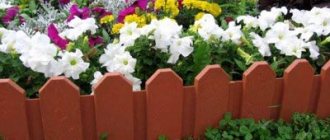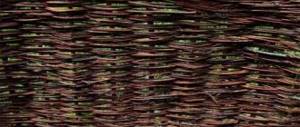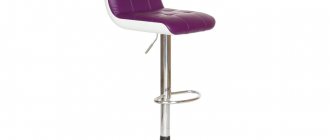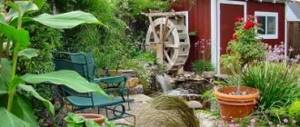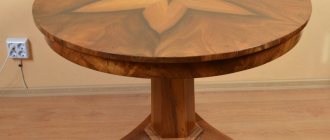Summer is a long-awaited time for summer residents. All owners of personal plots at this time disappear in their country houses and are engaged in planting various plants. Many gardeners try to decorate their property with flowering plantings. Flowers left without decoration do not look neat enough, so this matter cannot be done without the construction of special fences.
Fence for a flower bed made of plates
There are a lot of cost items in the dacha business, so few people want to spend money on buying ready-made fences. An excellent solution in this case would be a fence for a flower bed made from scrap materials, which allows you to decorate your garden plot very beautifully, as well as save money for more pressing problems.
Let's figure out what type of decorative fence for a flower bed can be and what materials it can be constructed from.
Return to contents
Nuances of choosing fences for flower beds
Let's look at some features of fencing for flower beds, which depend on factors such as the type of flowers being planted, the exterior of the garden plot and the purpose of the fencing:
An example of a flower bed made from tires
- If you plan to visually delimit the place where flowers are planted from another area, for example, from a path or lawn, you can provide a low fence;
- When there is a possibility that flowers may be damaged by pets or dented by children, it is necessary to construct a higher fence that can prevent the undesirable consequences of a meeting with household members;
- In some cases, it is necessary to prevent the root system of flowers from growing beyond the fence, which obliges summer residents to make a fence buried in the soil to the required distance;
- Depending on the size of the crops grown behind the fence, it is necessary to select the required structural strength so that the overgrown plant does not damage the fence or break it.
Once all of the above features have been taken into account, you can proceed to further actions, namely choosing the design of the future decorative fence.
Option for decorating a fence for a flower bed with flower pots
Return to contents
How to make a flowerbed without weeds
The weed problem can be solved already at the stage of planting a flower bed. (We have repeatedly told you how to choose plants for a perfect mixborder). This is how FORUMHOUSE member skissa protects her beautiful flower beds from weeds.
- We remove all the turf from the site of the future flower bed.
- We remove all remaining weed roots by hand.
- We add purchased peat, humus, sand - the composition of the soil depends on the plants that we will grow.
- We use one of three options:
- We cover the area with non-fabric, make slits in it, plant plants, and mask the non-fabric with backfill.
- We plant the plants, and cover the soil between them with two or three layers of newspaper. We mask the newspapers with backfill.
- We plant plants. We fill the entire space between them with mulch.
Gvozdichka member of FORUMHOUSE
The sod is easily removed in the fall; the roots of the sow thistle are already covered and do not resist much. I always prepare the soil for spring planting ahead of time, in the fall. And be careful with Roundup, that’s a bad thing!
There are plants that grow and literally push weeds out of the flower bed. This principle is the basis for weed control on the lawn: on a well-fertilized and timely watered lawn, weeds do not grow; cultivated grass displaces them. A flower garden is not a lawn, however, if you don’t want to spend long summer hours weeding, take a closer look at petunia.
Raspberry 18 member of FORUMHOUSE
Mixborders are not covered with anything. Plants grow greatly, petunias, for example, and there is no longer room for weeds. Several times a season I go through it with a flat cutter, it turns out pretty quickly. But this is all provided there is clean soil without weeds.
Weeds are well replaced by such ornamental ground cover plants as tenacious plants and sedums, mantlewort, whitewort, and zelenchuk, which have been fashionable in recent years.
Another secret is that flower beds made from perennials require much less care than those made from annuals.
Skisa member of FORUMHOUSE
That’s why I personally don’t have and never will have annuals.
An effect comparable to the pre-emergence treatment of a flowerbed with herbicide is obtained by mulching with cardboard - it turns out to be cheaper and safer.
FORUMHOUSE Shatl100 participant in the spring covers the area where perennials grow with cardboard, makes holes in it for plants, fills it with grass from the lawn, soil, etc. A little later he sows annuals there. By the beginning of autumn, the cardboard is completely overheated, and the perennials are taking root.
Choosing suitable materials for making a fence for flower beds
As already noted, a decorative fence can be purchased in specialized stores or constructed with your own hands. Those for whom time is more valuable than money will be able to choose a ready-made structure from materials such as metal, concrete or plastic. Perhaps the most expensive fencing for flower beds will be made of metal. You can distinguish between welded metal structures and forged fences, which are superior in cost to analogues produced by welding.
Be that as it may, metal fences for flower beds are rightfully considered very reliable and durable; the only thing you need to remember is periodic maintenance, which includes coating the fence with special protective compounds.
Metal is a material susceptible to corrosion, therefore, without proper care, all its strength qualities can be negated. Plastic fences are becoming increasingly popular among residents of country houses.
You can easily find a suitable color on the market, which will be very useful in creating a harmonious exterior. The shapes of plastic fences are varied, as are their sizes, so this type of fencing can be used to decorate not only a small flower bed, but also an impressive front garden, or even an entire plot. In operation, such fencing is very undemanding and retains its original appearance for a very long time. They are not afraid of either the hot summer sun or severe frost; the only thing that may be required from the owners is wet cleaning.
The classic and most common fencing for decorative flower beds is, of course, a wooden fence. As practice shows, such fencing is excellent for both an economy-class dacha and an elite country house. It is worth noting that such fences are less durable compared to plastic and metal fences, however, with proper care, a wooden flowerbed fence will last quite a long time.
An example of a wooden fence for a flower bed
To extend the “life” of fences of this type, it is necessary to provide treatment with antiseptic compounds that prevent rotting.
Among other things, it is necessary to note the high flexibility of wood for DIY installation work. This fact makes this material stand out and maintains its popularity. Recently, in summer cottages one can observe a very unusual picture - concrete fences. It’s much more common to see them fencing factories and construction sites. However, currently the construction market offers us decorative concrete products that can outshine other types of fencing in their beauty. Without any problems, you can choose a fence suitable for your dacha by choosing different patterns and colors.
Return to contents
DIY flowerbed fencing
Summer residents who like to do DIY construction on their property have probably more than once come up with the idea of creating a fence from scrap materials that will make the plot unique and will not allow them to empty their pockets.
The process of installing a fence made of logs
From scrap materials on the site, a thrifty owner may have a lot of building materials, as well as items that at first glance are not at all suitable for construction. For example, the same wood, plastic or metal can be useful when building a decorative fence with your own hands. Let's try to understand the design of such fences. Return to contents
How to choose a fence
All kinds of fences are quite easy to make with your own hands from scrap materials. They use plastic bottles, stones, bricks, iron pipes, trees, in general, everything that can be found. They are also used to divide flower beds into zones when it is necessary to emphasize certain features of the flower garden.
When choosing a fence, analyze what plants you will plant. If there are mainly plants that love moisture, then you should not use wood; it is better to build fences from iron pipes, stone or plastic. If flowers that love dry soil and plenty of sunlight prevail, then wooden, stone, and plastic components will be used. The choice of materials also depends on the design you came up with - iron and stone fences are more suitable for a desert composition; for a rustic pastoral composition - brick, stone, wood.
If the fence serves a decorative function, then preference should be given to a small fence 6-8 cm high. For borders along paths, you should choose a stable structure 10 cm high or higher. Brick and stone fences are built around flower beds raised above the ground.
If you need to protect flowers from uncontrolled growth, then plastic, iron mesh or brickwork will come to the rescue. To protect against children and pets, you will need high fences, at least 40 cm in height, - wooden, plastic or forged metal. As you can see, most flower beds can be beautifully bordered using available materials.
Wooden fence
To construct a fence of this type, ordinary boards, beams or even crooked branches can be used. Most often, familiar boards are used, which, if desired, can be shortened or made longer, and also painted in the desired color. To install it yourself, you need to calculate the number of pillars and boards that will be needed in the future. First, pillars are dug in around the front garden, after which boards are attached to them. As you can see, the manufacturing procedure is quite simple and does not require special construction skills from the summer resident.
You can often find unattended logs left over from construction on a personal plot. A fence for a flower bed can also be made from scrap materials. To do this, the material should be cut into separate parts of the required length and dug along the perimeter of the front garden.
The fence can be made the same height along the entire border of the flowerbed, or it can be of different heights, which will give the area an unusual look.
Willow twigs are often used to build fences for flower beds. Such wicker fences look great in rustic-style areas. Let's consider the technology for creating such a design. Before installation, you need to buy or collect willow twigs, since these trees are not uncommon in our country. First, you need to dig stakes around the perimeter of the flowerbed, which will serve as the base of the fence; The smaller the distance between them, the stronger the structure will be.
Arrangement of a fence for a flower bed from twigs
It is necessary to weave branches around the pegs in a checkerboard pattern, moving them back and forth: this arrangement will allow them to hold securely on the base.
Another type of fencing made from scrap materials is a fence made from fallen branches or snags. This design for a flower bed will look very natural and will fit perfectly into an area with wooden buildings. In order to build such a fence, it is enough to dig them into the ground to an impressive depth, then the fence will turn out to be quite strong.
Whatever wooden fence you choose, you must remember that this material is susceptible to the influence of the external environment and insects. This fact obliges summer residents to treat wooden structures with special protective compounds.
Return to contents
Pergons and gabions
Natural stone in a welded mesh allows you to create flower beds and fences for a garden of any height. Multi-tiered or tall flower beds made from gabions look great in combination with the natural landscape.
Installing such a fence is also not difficult. You need to assemble a box from a welded mesh and fill it with any stone, the main thing is that the size of the backfill matches the mesh cells.
You can install a structure made of stone and mesh on any base. Rack rods with a diameter of about 8 mm are used as the base.
The grate can be made from galvanized steel rods with a cross-section of 5 mm. In addition to stone, other materials may be present in the structure: tree cuts, glass, brick, concrete. After installing the flowerbed, its walls are lined with geotextiles, and soil is poured into which flowers can be planted.
Return to contents
Brick or stone fence
For a stone fence you will need stones of various sizes, which are laid out in a chaotic manner around the flower bed. To prevent the fence from falling apart over time, individual elements should be secured with cement. Stone fences can be either high or low, however, structures no higher than 20 centimeters are usually erected for flower beds.
If brick was chosen as the material for building the fence, DIY installation will be much easier. The structure can be erected using conventional masonry, or brick blocks can be laid on edge. The brick can later be painted in the desired color to give the area a harmonious look. Naturally, such a brick fence will cost more than its wooden counterparts, however, if there are unnecessary old bricks lying around on the site, then the construction will cost the summer resident almost free.
Return to contents
Decorative fences made of natural stone
Garden fencing made of natural stone is beauty, harmony and durability. You can create beautiful flower beds and flower beds from natural materials. You can use any mineral for a garden fence: pebbles, granite, sandstone, dolomite, marble. You can make the following types of decorative fencing with your own hands from stone:
- Simple laying in one row. The easiest way to arrange flower beds is to lay stone around the perimeter of the fence.
- Laying in several rows. To get a tall and more noticeable flower bed made of stone, it can be laid in several rows. It is more convenient to use flat slate for work. A trench is dug under the base of the stone fence, which can be filled with cement to create a small foundation. The stone is laid using cement. To make the masonry even, you need to mark the place of the flower bed and stretch the guide twine.
The process of laying a stone fence for a flower bed
Usually the stones are fastened with cement closer to the inside of the fence, so that the effect of dry masonry without mortar remains on the outside.
- Spiral flower bed made of stone. A multi-tiered spiral flowerbed is an interesting solution for the garden. Gradually adding soil, the stones are laid out so that the highest point is formed in the center of the round flowerbed. At the top of such a flower bed, heat-loving flowers will feel good.
Return to contents
Fence made from scrap materials
Often, owners of country houses use materials to improve their plots that, at first glance, have nothing to do with construction, and fences for flower beds are no exception. Let's consider the most popular means with which you can make a decorative fence. One of the most popular fencing made from scrap materials is a fence made from old car tires. The tires are dug halfway into the ground, and the part protruding above the ground is painted in the desired color.
An example of a flowerbed made from tires
Some handymen manage to make all sorts of figures from tires, for example, swans, and decorate flowerbeds in this way.
In any case, such a design will not go unnoticed. A more unusual way to decorate a flower garden is to use old CDs. For such a fence, you will need to dig supporting stakes into the ground, on which the music discs will be attached. This arrangement of flowers will constantly sparkle in the sun, attracting the eyes of others to you and the flowers.
The easiest thing to do with your own hands is a fence made from glass or plastic bottles. All summer residents will have this material, so there shouldn’t be any problems finding it. To build a fence for a flower bed, you need to dig the bottles, neck down, to the same depth. It is best if the bottles are the same color. There are many more ways to make fences from scrap materials, and in order to come up with your own method, you just need to take a good look at your feet. Maybe there is something lying around your site that seems like it’s time to throw it away, but after reading this material, you will look at these things with different eyes.
